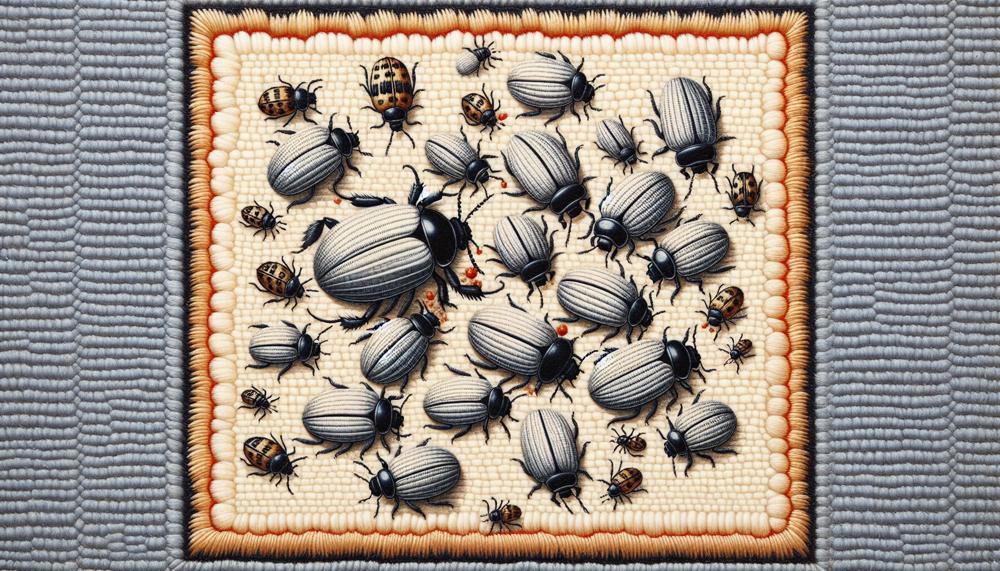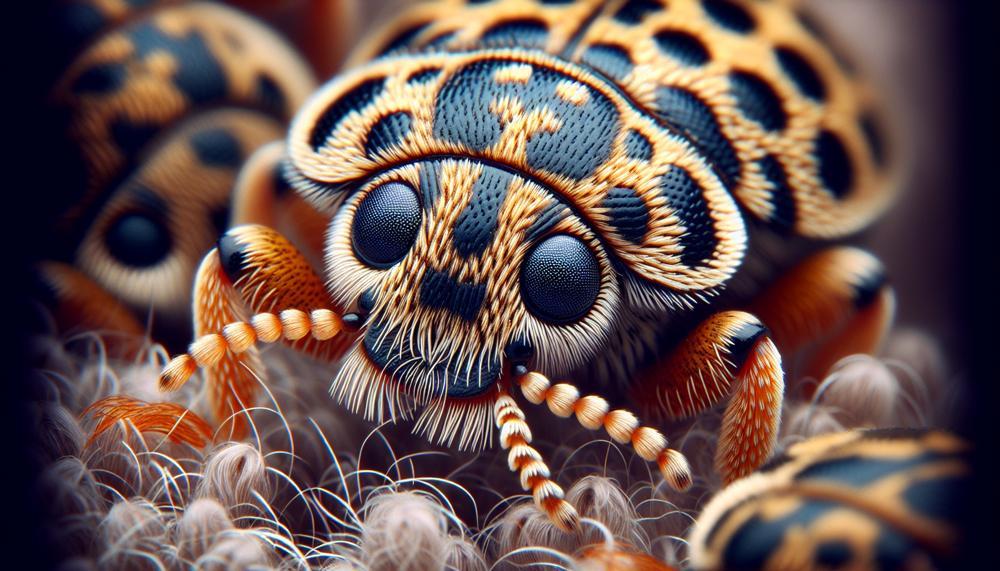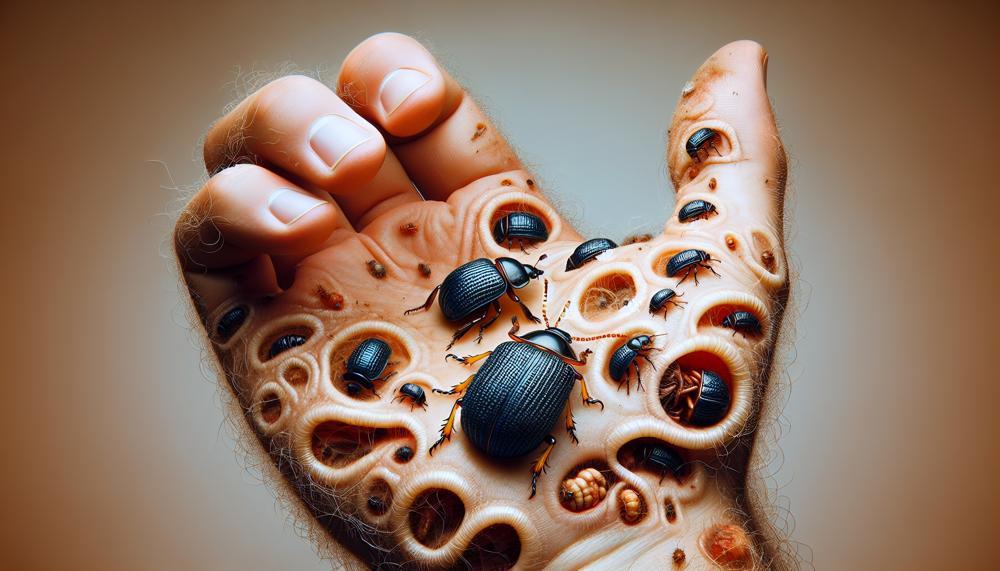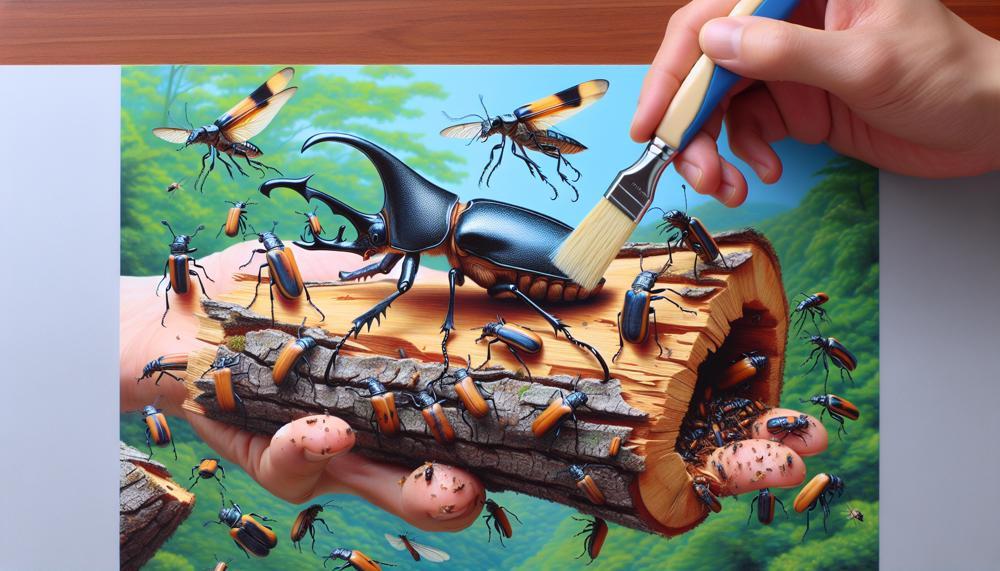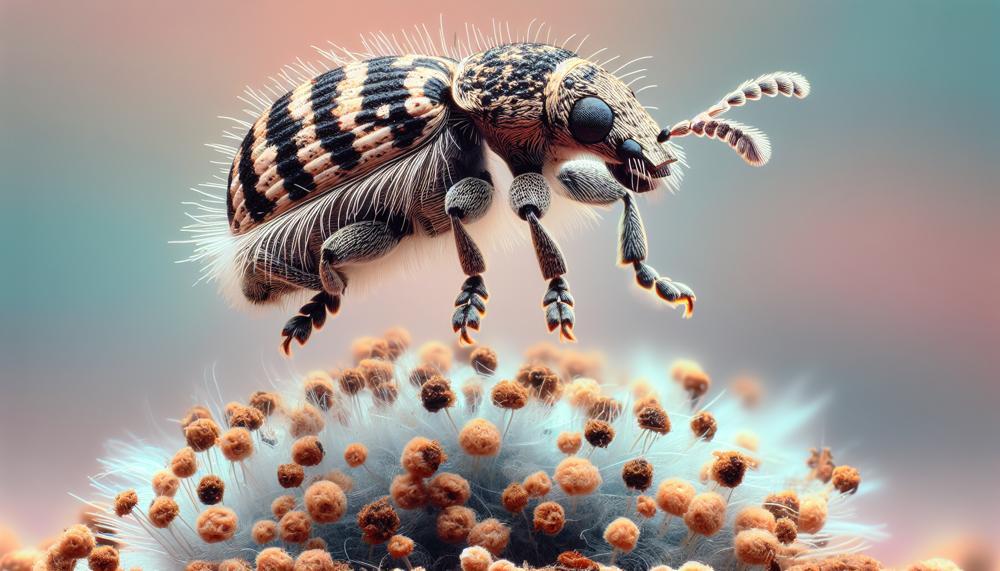Carpet beetles: those tiny, unassuming creatures that can leave a big, itchy mark on your skin. These common household pests are often overlooked until their bites start wreaking havoc on your body. In this blog post, we’ll delve into the world of carpet beetle bites, exploring their causes, symptoms, and effective prevention strategies. Get ready to say goodbye to those pesky critters and reclaim your bite-free haven!
Key Points:
- Discover the surprising truth about carpet beetles and their sneaky biting habits.
- Learn to recognize the telltale signs of carpet beetle bites and differentiate them from other bug bites.
- Explore a comprehensive guide to preventing carpet beetle infestations and protecting your home from these unwelcome guests.
- Uncover the secrets to soothing the itch and discomfort caused by carpet beetle bites, ensuring a speedy recovery.
So, grab a cup of coffee, get comfortable, and let’s embark on a journey into the world of carpet beetle bites, leaving no stone unturned in our quest for knowledge and relief.
Table of Contents
- 1 Recognizing the Signs and Symptoms of Carpet Beetle Bites
- 2 Understanding the Causes and Risk Factors for Carpet Beetle Bites
- 3 Effective Methods for Preventing Carpet Beetle Bites
- 4 Natural and Chemical Treatments for Carpet Beetle Bites
- 5 6. Managing Carpet Beetle Bites: First Aid and Home Remedies
- 6 Professional Pest Control Measures for Carpet Beetles
- 7 Conclusion
Recognizing the Signs and Symptoms of Carpet Beetle Bites
| Sign/Symptom | Description |
|---|---|
| Small Red Bumps | Raised, red bumps, often in clusters, that can appear anywhere on the body. |
| Itching | Intense itching sensation around the bite area. |
| Blisters | Small, fluid-filled blisters that may develop at the bite site. |
| Hives | Raised, red patches of skin that can appear as a result of an allergic reaction to the bite. |
| Swelling | Mild swelling around the bite area, particularly if there are multiple bites in close proximity. |
| Skin Irritation | General redness, inflammation, and irritation of the skin surrounding the bite. |
| Secondary Infection | In rare cases, the bite can become infected, leading to symptoms such as increased pain, swelling, and discharge. |
Understanding the Causes and Risk Factors for Carpet Beetle Bites
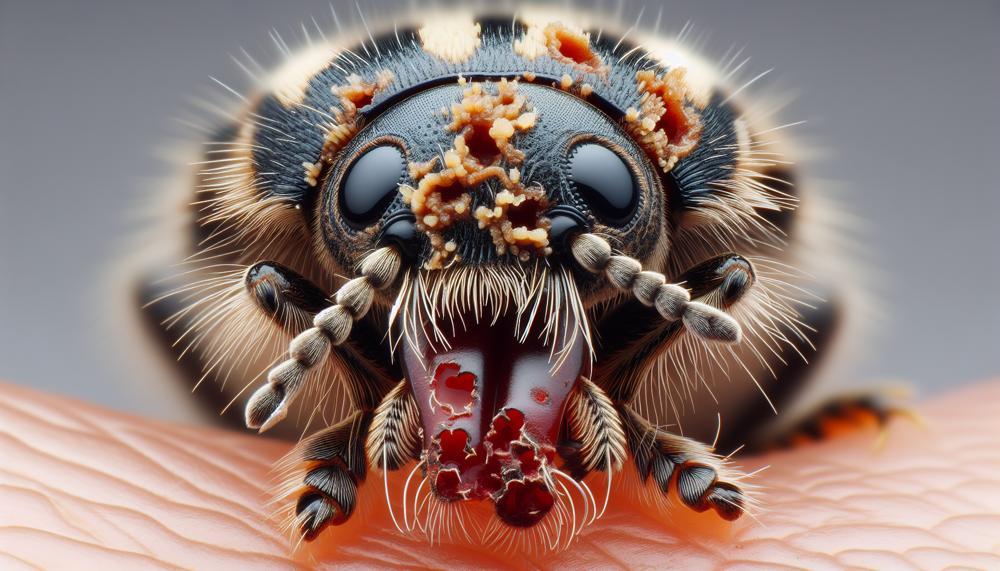
| Common Places | Attractants |
|---|---|
| Closets | Clothing, particularly natural fibres like wool and silk |
| Pantries | Food crumbs, pet food, and stored grains |
| Bathrooms | Hair, skin flakes, and soap scum |
| Attics and basements | Dust, dirt, and undisturbed areas |
| Furniture | Upholstery, stuffing, and pet hair |
Carpet beetles are attracted to a variety of factors, including:
- Food: Carpet beetle larvae feed on a wide range of materials, including natural fibres, pet food, and stored grains.
- Moisture: Carpet beetles prefer humid environments, as this helps their eggs and larvae to develop.
- Darkness: Carpet beetles are nocturnal and are more likely to be found in dark, undisturbed areas.
- Warmth: Carpet beetles thrive in warm temperatures, which is why they are often found in attics and basements.
Effective Methods for Preventing Carpet Beetle Bites
| Prevention Method | Effectiveness | Ease of Implementation |
|---|---|---|
| Regular Vacuuming | High | Easy |
| Decluttering and Removing Debris | High | Moderate |
| Proper Food Storage | High | Easy |
| Temperature and Humidity Control | Moderate | Moderate |
| Insecticides and Traps | High | Moderate |
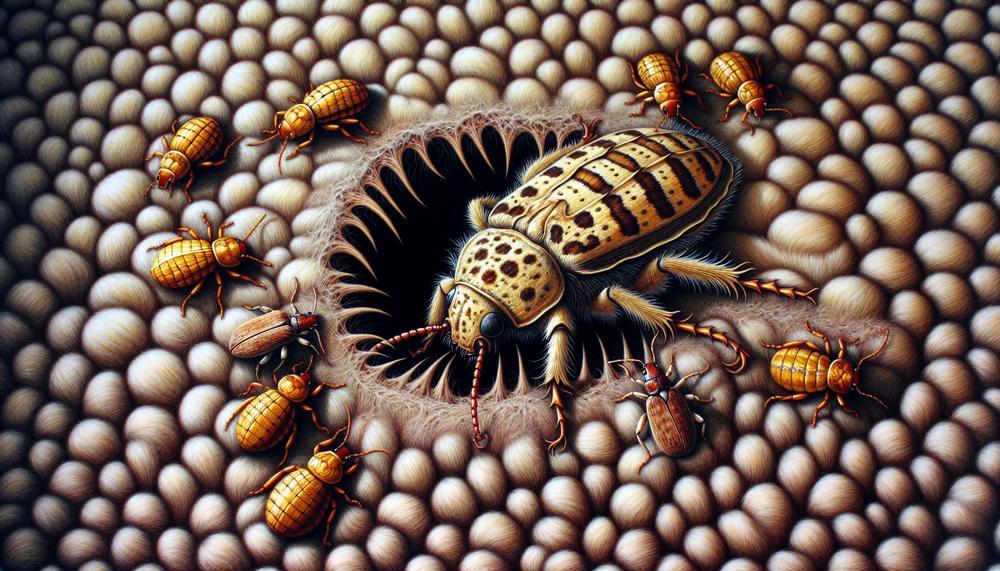
- Vacuum Regularly: Vacuuming regularly, particularly in areas where carpet beetles are likely to congregate, is a highly effective method of prevention. Vacuuming removes not only adult carpet beetles but also their eggs, larvae, and food sources. Be sure to vacuum under furniture, in closets, and along baseboards, where these critters often hide.
- Declutter and Remove Debris: Carpet beetles thrive in cluttered, dusty environments, so decluttering and removing debris from your home can significantly reduce their population. Pay special attention to areas where food crumbs, pet hair, and other organic matter tend to accumulate.
- Store Food Properly: Improperly stored food attracts carpet beetles, so ensure all food items, particularly pet food and grains, are stored in airtight containers. This will prevent carpet beetles from accessing these food sources and reproducing.
- Control Temperature and Humidity: Carpet beetles prefer warm, humid environments, so maintaining a cool, dry home can help deter them. Keep your home’s temperature below 70°F (21°C) and the humidity below 50%. Using a dehumidifier in damp areas can also help reduce the carpet beetle population.
- Insecticides and Traps: If you’re dealing with a severe carpet beetle infestation, using insecticides or traps may be necessary. Apply insecticides specifically designed for carpet beetles to affected areas, following the instructions carefully. Carpet beetle traps, which use pheromones to attract and trap the insects, can also be effective.
Natural and Chemical Treatments for Carpet Beetle Bites
| Natural Treatments | Chemical Treatments |
|---|---|
| Calamine lotion | Hydrocortisone cream |
| Aloe vera gel | Antihistamines |
| Witch hazel | Topical anesthetics |
| Oatmeal bath | Insect repellent |
| Baking soda paste | Carpet beetle spray |
- Calamine lotion: Calamine lotion is a natural remedy that can help to soothe the itching and discomfort caused by carpet beetle bites. It is available over-the-counter in most pharmacies.
- Aloe vera gel: Aloe vera gel is another natural remedy that can help to relieve the itching and discomfort of carpet beetle bites. It is also available over-the-counter in most pharmacies.
- Witch hazel: Witch hazel is a natural astringent that can help to reduce inflammation and itching. It is available over-the-counter in most pharmacies.
- Oatmeal bath: Oatmeal is a natural anti-inflammatory that can help to soothe the itching and discomfort of carpet beetle bites. To take an oatmeal bath, add 1 cup of oatmeal to a lukewarm bath and soak for 15-20 minutes.
- Baking soda paste: Baking soda is a natural alkali that can help to neutralize the acids in carpet beetle bites. To make a baking soda paste, mix 1 part baking soda with 3 parts water. Apply the paste to the affected area and leave it on for 15-20 minutes.
- Hydrocortisone cream: Hydrocortisone cream is a topical corticosteroid that can help to reduce inflammation and itching. It is available over-the-counter in most pharmacies.
- Antihistamines: Antihistamines are medications that can help to block the effects of histamine, a chemical that is released by the body in response to an allergic reaction. Antihistamines can be helpful in relieving the itching and discomfort of carpet beetle bites.
- Topical anesthetics: Topical anesthetics are medications that can help to numb the skin and relieve pain. They are available over-the-counter in most pharmacies.
- Insect repellent: Insect repellent can help to prevent carpet beetles from biting you in the first place. Apply insect repellent to your skin before spending time in areas where carpet beetles are known to be present.
- Carpet beetle spray: Carpet beetle spray can be used to kill carpet beetles and their eggs. It is important to follow the directions on the product label carefully when using carpet beetle spray.
6. Managing Carpet Beetle Bites: First Aid and Home Remedies
| Home Remedy | Application | Benefits |
|---|---|---|
| Baking Soda Paste | Make a paste using baking soda and water. Apply it to the affected area and let it dry. Rinse with cold water. | Baking soda helps neutralise the acids released by the beetle bites, reducing inflammation and itching. |
| Oatmeal Bath | Add colloidal oatmeal to a warm bath and soak for at least 15 minutes. | Colloidal oatmeal has anti-inflammatory and moisturising properties that soothe irritated skin. |
| Aloe Vera Gel | Apply pure aloe vera gel directly to the affected area. | Aloe vera has cooling and anti-inflammatory properties that help reduce itching and redness. |
| Witch Hazel | Soak a cotton ball in witch hazel and apply it to the bites. | Witch hazel is a natural astringent that helps reduce inflammation and itching. |
| Tea Tree Oil | Dilute tea tree oil with a carrier oil, such as coconut or olive oil, and apply it to the affected area. | Tea tree oil has antibacterial and anti-inflammatory properties that help soothe bites. |
Professional Pest Control Measures for Carpet Beetles
| Professional Pest Control | DIY Methods |
|---|---|
| Expertise and Experience | Limited Knowledge and Experience |
| Targeted Treatment Plans | Generic, One-Size-Fits-All Approaches |
| Access to Professional-Grade Products | Limited Access to Effective Products |
| Thorough Inspection and Identification | Difficulty in Identifying the Specific Carpet Beetle Species |
| Follow-Up Services and Monitoring | Lack of Ongoing Support and Monitoring |
| Guaranteed Results and Satisfaction | No Guarantees of Effectiveness |
| Safe and Environmentally-Friendly Solutions | Potential for Using Harmful Chemicals Incorrectly |
| Peace of Mind and Convenience | Time-Consuming and Stressful Process |
Conclusion
Carpet beetles may seem small compared to other pests in the house, but their bites can be very painful. These tiny bugs can turn your skin into a battlefield of red, itchy bumps that hurt and bother you. You can get back your bite-free haven and send these annoying animals away, though, if you know what to do.
Carpet beetles like to live in dark, secluded areas of your home. They eat natural fibers, food crumbs, and pet hair and do very well on these foods. By learning about their likes and dislikes and taking effective steps to keep them away, like regularly cleaning, organizing, and storing food properly, you can greatly lower their population.
Don’t give up if you find that carpet beetles have taken over your home. Calamine cream, aloe vera gel, and oatmeal baths are all natural ways to ease the itching and pain that their bites cause. Talk to a professional pest control service about more serious cases. They can come up with specific treatment plans that will keep you from getting bitten in the future.
Always keep in mind that protection is better than cure. You can make your home a place where carpet bugs and their itchy friends don’t want to live by keeping it clean and organized.
To get your home back as a pest-free zone where you can enjoy peace and comfort without having to deal with irritating carpet beetle bites, act now.

